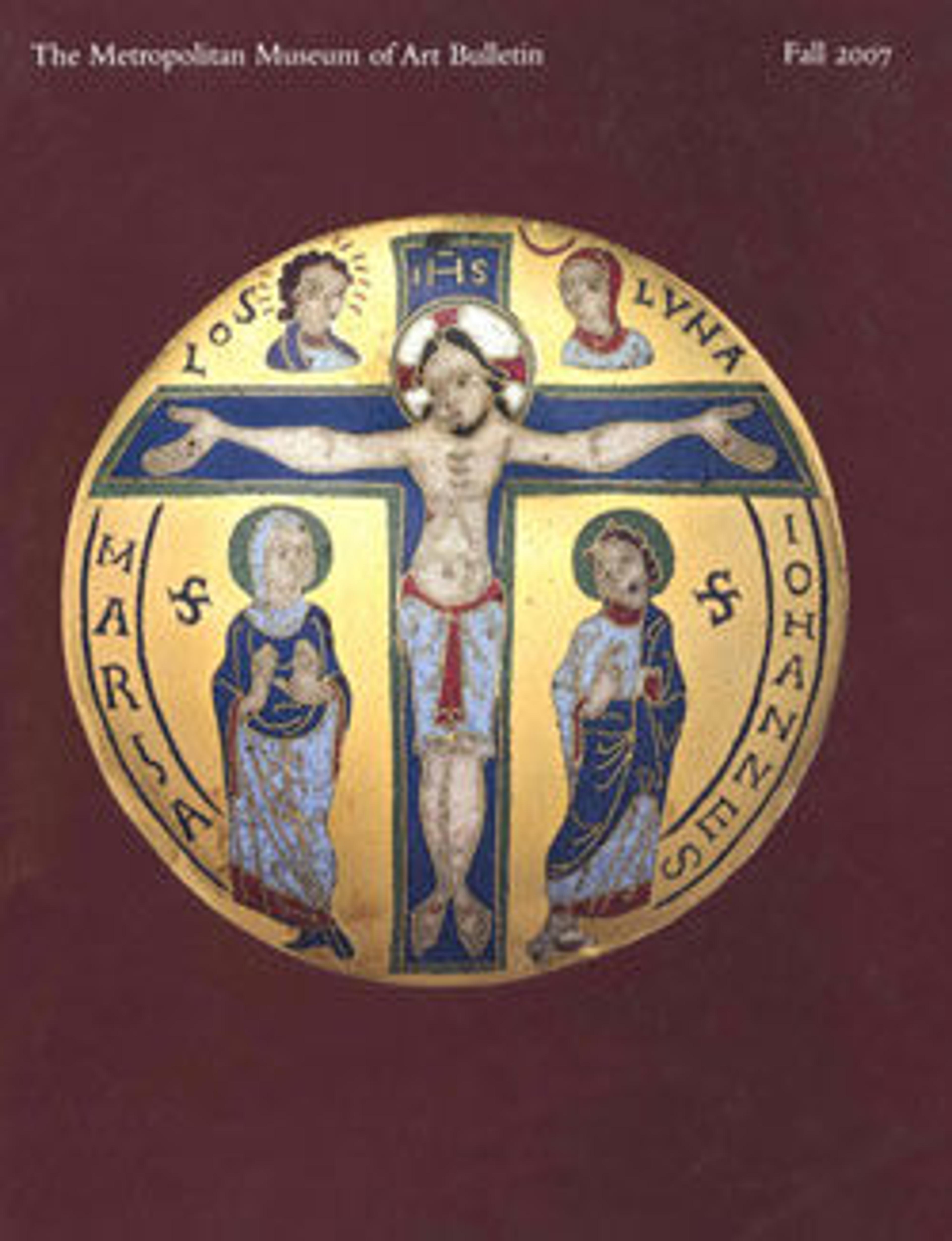Bookstand
The shaped aprons on the front and back of this bookstand bear the crowned initials FPO for Ferdinand Philippe, duc d'Orléans (1810—1842), oldest son of King Louis-Philippe. A noted patron of the arts with eclectic taste, the duke commissioned this striking black and white showpiece from the ébéniste Georges-Alphonse Jacob Desmalter, grandson of the celebrated eighteenth-century menuisier (joiner) Georges Jacob, in 1839. Most likely intended to display Les Offices de la Vierge, a lavish book of hours created for Ferdinand Philippe the previous year, the bookstand consists of a base, a bookcase with two openwork doors supported on baluster-shaped legs, and a sloping upper part with a book rest. A detailed mémoire by Desmalter indicates that the velvet-lined interior originally held a pillow for the missal. The top has a ratcheted mechanism that allows the central panel, embellished with marquetry of ivory, mother-of-pearl, and snakewood, to be raised. The historicizing design by Charles-Auguste Questel reflected contemporary interest in the Renaissance style. The sculptor Chabraux carved the elaborate decoration in ivory and ebonized maple.
Before being sent to the Tuileries Palace, where it furnished the duke's salon d'attente, the bookstand was exhibited at the 1839 Exposition des Produits de l'Industrie in Paris.
Before being sent to the Tuileries Palace, where it furnished the duke's salon d'attente, the bookstand was exhibited at the 1839 Exposition des Produits de l'Industrie in Paris.
Artwork Details
- Title:Bookstand
- Designer:Design attributed to Charles-Auguste Questel (1807–1888)
- Maker:Workshop of Georges-Alphonse Jacob Desmalter (1799–1870)
- Decorator:Carved decoration by Chabraux
- Date:1839
- Culture:French, Paris
- Medium:Ebony, ebony veneer, ebonized maple, oak, maple, rosewood, snakewood, ivory, mother-of-pearl; brass hardware and mounts; lined with silk velvet not original to the piece
- Dimensions:Overall (at base): 53 x 32 1/8 x 23 1/8 in. (134.6 x 81.6 x 58.7 cm); Overall (at widest edge of lectern): 53 x 30 11/16 x 21 5/8 in.
- Classification:Woodwork-Furniture
- Credit Line:Purchase, Louis V. Bell, Harris Brisbane Dick, Fletcher, and Rogers Funds and Joseph Pulitzer Bequest; and Gift of J. Pierpont Morgan and Rogers Fund, by exchange, 2006
- Object Number:2006.518
- Curatorial Department: European Sculpture and Decorative Arts
More Artwork
Research Resources
The Met provides unparalleled resources for research and welcomes an international community of students and scholars. The Met's Open Access API is where creators and researchers can connect to the The Met collection. Open Access data and public domain images are available for unrestricted commercial and noncommercial use without permission or fee.
To request images under copyright and other restrictions, please use this Image Request form.
Feedback
We continue to research and examine historical and cultural context for objects in The Met collection. If you have comments or questions about this object record, please contact us using the form below. The Museum looks forward to receiving your comments.
